API RP 2A-WSD-2007 Recommended Practice for Planning, Designing and Constructing Fixed Offshore Platforms-Working Stress Design
Подождите немного. Документ загружается.

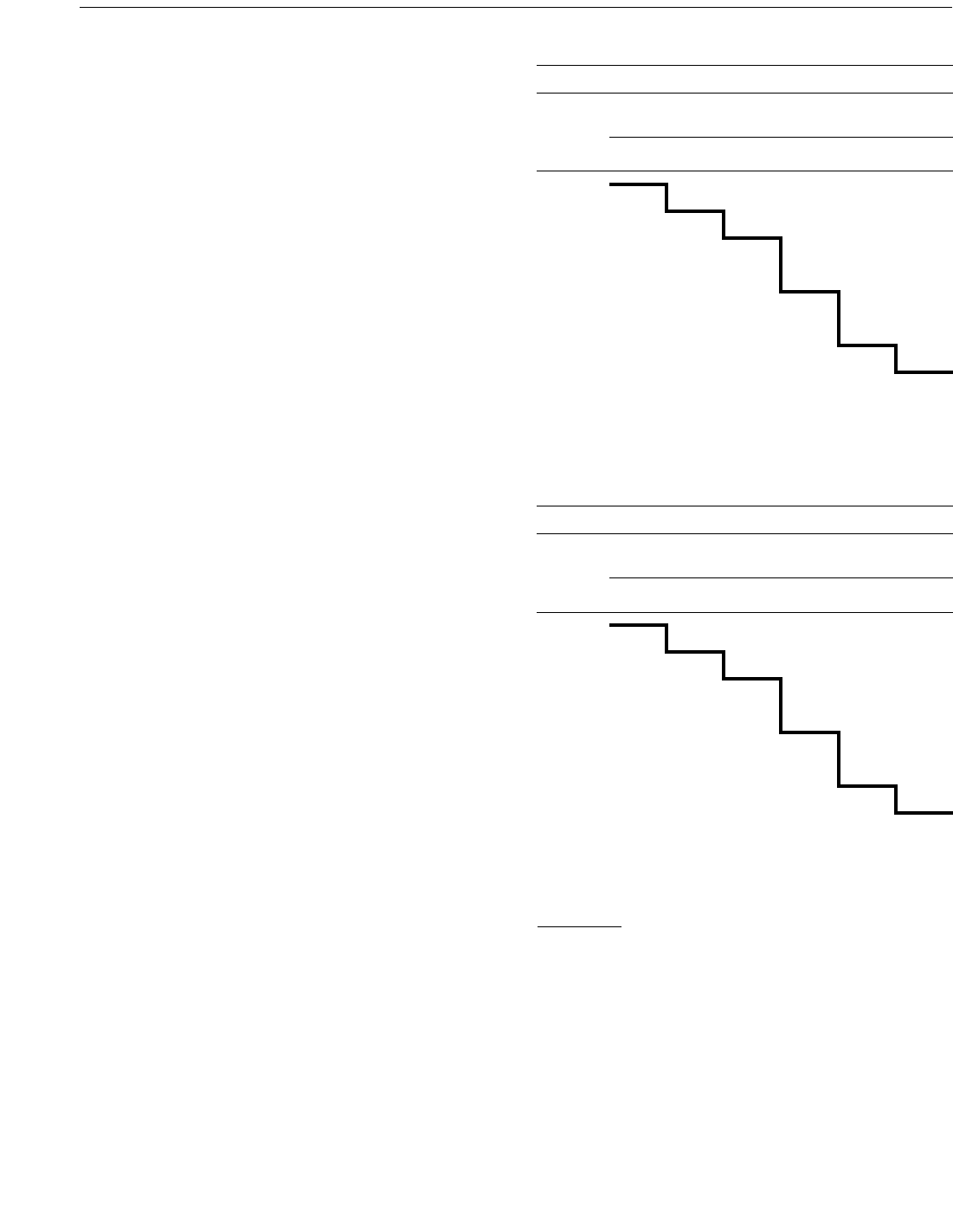
RECOMMENDED PRACTICE FOR PLANNING, DESIGNING AND CONSTRUCTING FIXED OFFSHORE PLATFORMS—WORKING STRESS DESIGN 99
and below water, to drive battered or vertical piles, through
legs or through sleeves and guides, or vertical piles through
sleeves alone. In calculating pile stresses, full account should
be taken of wave, current and wind forces, both during driv-
ing and during hammer stabbing (which may be either above
or below water). Further, while for steam hammers the weight
of the cage is generally held by crane, for hydraulic hammers
the whole weight of the hammer is borne by the pile.
The energy output is generally varied by the contractor to
maintain a fairly low blowcount. Thus, blowcounts do not
give a direct guide to soil stratification and resistance. Since
the ram is encased, hammer performance cannot be judged
visually. It is therefore important that measurements are made
to give a complete record of performance including for exam-
ple, ram impact velocity, stroke, pressure of accelerating
medium and blowrate. Reliable instrumentation of some piles
may be also desirable, to verify the energy transferred to the
pile to aid interpretation of soil stratification and to limit pile
stresses.
Monitoring of underwater driving requires that easily iden-
tified, unambiguous datums, together with robust television
cameras or remotely operated vehicles, capable of maintain-
ing station, be employed. Alternatively, for shallow water
sites, it is possible to extend the hammer casing so that blow-
counts can be monitored above water.
Because no cushion block is used, there is no change in
ram to anvil pile characteristics as driving progresses and no
requirement for cushion changes. However, because of the
steel to steel contact, particular attention should be paid to the
design of the pile head.
In selecting hydraulic hammers for deeper water applica-
tions, account should be taken of possible decreases in effi-
ciency due to increased friction between the ram and its
surrounding air. Sufficient air should be supplied to the ham-
mer so that water ingress is prevented and water in the pile
should be able to escape freely.
It should be noted that hammer changes take much longer
than for steam hammers.
12.5.7.b Selection of Pile Hammer Size
When piles are to be installed by driving, the influence of
the hammers to be used should be evaluated as a part of the
design process as set forth in Section 6.10. It is not unusual
for alternate hammers to be proposed for use by the erector
well after the design has been completed and reevaluation by
the designer may not be feasible. In such an event, justifica-
tion for the use of an alternate hammer shall include calcula-
tion of stresses in the pile resulting therefrom as set out in
Section 6.10.
In lieu of an analytical solution for dynamic stress the
guidelines in Table 12.5.7 may be used:
Table 12.5.7 is based on industry experience with up to 60
in. diameter piles and 300 ft-kip hammers.
When it is necessary to use a pile hammer to drive piles
with less than the guideline wall thickness set out in the above
table, or that determined by an analytical solution, the defini-
tion of refusal used should be reduced proportionally.
Table 12.5.7—Guideline Wall Thickness
Guideline Wall Thickness, In.
Pile
Outside
Diameter
in.
Hammer Size, Ft-Kips
36 60 120 180 300 500
24
1
/
2
1
/
2
7
/
8
———
30
9
/
16
9
/
16
11
/
16
———
36
5
/
8
5
/
8
5
/
8
7
/
8
——
42
11
/
16
11
/
16
11
/
16
3
/
4
1
1
/
4
—
48
3
/
4
3
/
4
3
/
4
3
/
4
1
1
/
8
1
3
/
4
60
7
/
8
7
/
8
7
/
8
7
/
8
7
/
8
1
3
/
8
72——1111
1
/
8
84———1
1
/
8
1
1
/
8
1
1
/
8
96———1
1
/
4
1
1
/
4
1
1
/
4
108————1
3
/
8
1
3
/
8
120————1
1
/
2
1
1
/
2
Guideline Wall Thickness, mm
Pile
Outside
Diameter
mm
Hammer Size, KJ
36 60 120 180 300 500
610131322———
762141418———
91416161622——
10671818181932—
1219191919192944
1524222222222235
1829——25252529
2134 — — — 29 29 29
2438 — — — 32 32 32
2743————3535
3048————3838
Values above the solid line based upon minimum pile area in square
inches equals to 50% of the rated energy of the hammer in ft-kips.
Values below line controlled by Section 6.10.6.
Copyright American Petroleum Institute
Provided by IHS under license with API
Licensee=Indonesia location/5940240008
Not for Resale, 10/22/2008 00:07:12 MDT
--`,,```,,,`,,,,,,,,,,,,,,`,``,`-`-`,,`,,`,`,,`---
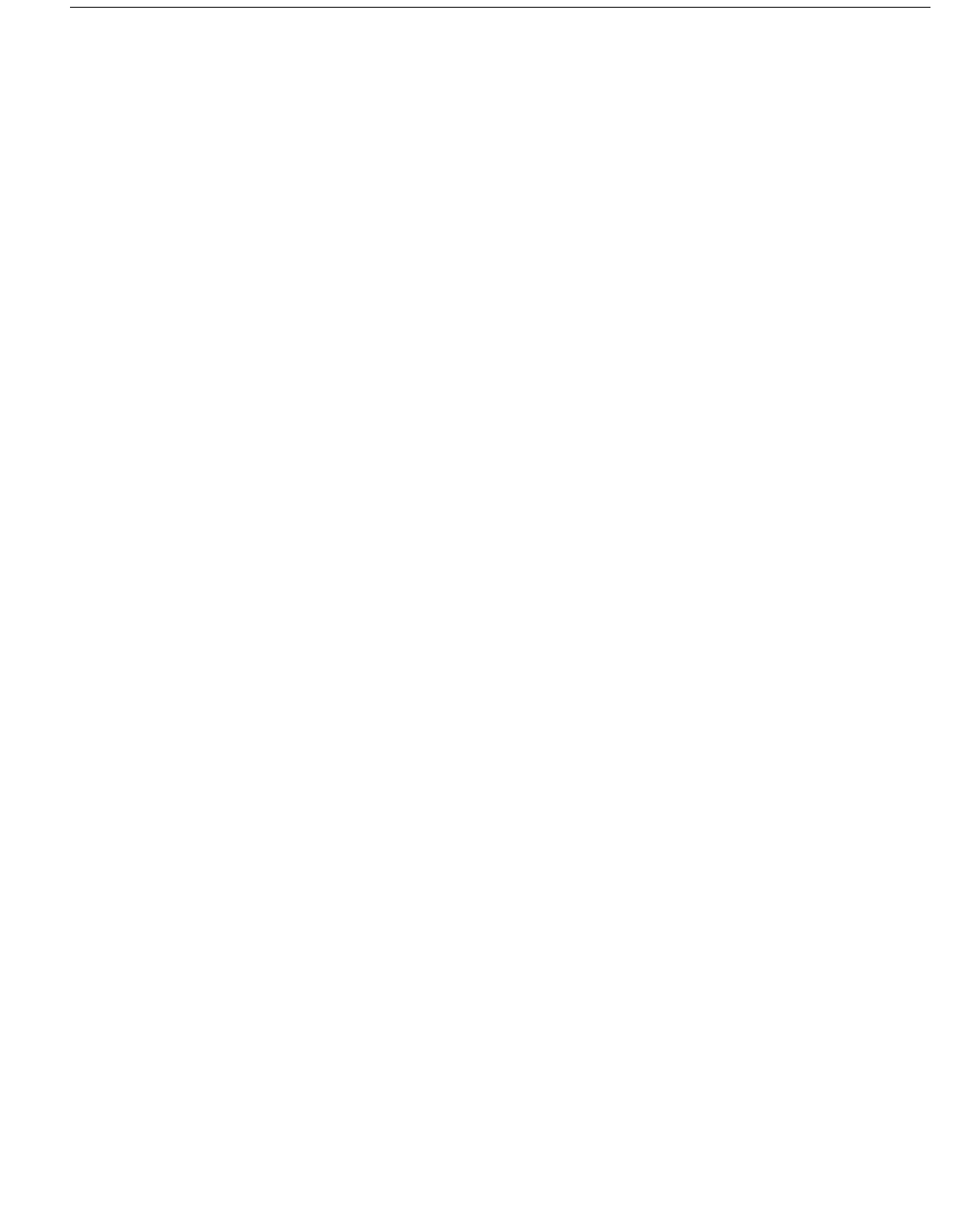
100 API RECOMMENDED PRACTICE 2A-WSD
12.5.8 Drilled and Grouted Piles
Drilling the hole for drilled and grouted piles may be
accomplished with or without drilling mud to facilitate main-
taining an open hole. Drilling mud may be detrimental to the
surface of some soils. If used, consideration should be given
to flushing the mud with circulating water upon completion
of drilling, provided the hole will remain open. Reverse circu-
lation should normally be used to maintain sufficient flow for
cutting removal. Drilling operations should be done carefully
to maintain proper hole alignment and to minimize the possi-
bility of hole collapse. The insert pile with an upset drill bit
on its tip may be used as the drill string so that it can be left in
place after completion of the hole.
Centralizers should be attached to the pile to provide a
uniform annulus between the insert pile and the hole. A
grouting shoe may be installed near the bottom of the pile to
permit grouting of the annulus without grouting inside the
pile. It may be necessary to tie down the pile to prevent flota-
tion in the grout if a grouting shoe is used. The time before
grouting the hole should be minimized in soils which may be
affected by exposure to sea water. The quality of the grout
should be tested at intervals during the grouting of each pile.
Means should be provided for determining that the annulus
is filled as further discussed in 12.5.11. Holes for closely
positioned piles should not be open at the same time unless
there is assurance that this will not be detrimental to pile
capacity and that grout will not migrate during placement to
an adjacent hole.
12.5.9 Belled Piles
In general, drilling of bells for belled piles should employ
only reverse circulation methods. Drilling mud should be
used where necessary to prevent caving and sloughing. The
expander or underreaming tool used should have a positive
indicating device to verify that the tool has opened to the full
width required. The shape of the bottom surface of the bell
should be concave upward to facilitate later filling of the bell
with tremie concrete.
To aid in concrete placement, longitudinal bars and spiral
steel should be well spaced. Reinforcing steel may be bun-
dled or grouped to provide larger openings for the flow of
concrete. Special care should be taken to prevent undue con-
gestion at the throat between the pile and bell where such
congestion might trap laitance. Reinforcing steel cages or
structural members should extend far enough into the pile to
develop adequate transfer.
Concrete should be placed as tremie concrete, with the
concrete being ejected from the lower end of a pipe at the bot-
tom of the bell, always discharging into fresh concrete. Con-
crete with aggregates
3
/
8
in. (10 mm) and less may be placed
by direct pumping. Because of the long drop down the pile
and the possibility of a vacuum forming with subsequent
clogging, an air vent should be provided in the pipe near the
top of the pile. To start placement, the pipe should have a
steel plate closure with soft rubber gaskets in order to exclude
water from the pipe. Care should be taken to prevent unbal-
anced fluid heads and a sudden discharge of concrete. The
pile should be filled to a height above the design concrete
level equal to 5% of the total volume of concrete placed so as
to displace all laitance above the design level. Suitable means
should be provided to indicate the level of the concrete in the
pile. Concrete placement in the bell and adjoining section of
the pile should be as continuous as possible.
12.5.10 Pile Installation Records
Throughout the pile driving operation, comprehensive
driving and associated data should be recorded. The recorded
data should include:
1. Platform and pile identification.
2. Penetration of pile under its own weight.
3. Penetration of pile under the weight of the hammer.
4. Blow counts throughout driving with hammer
identification.
5. Unusual behavior of hammer or pile during driving.
6. Interruptions in driving, including “set-up” time.
7. Lapsed time for driving each section.
8. Elevations of soil plug and internal water surface after
driving.
9. Actual length of each pile section and cutoffs.
10. Pertinent data of a similar nature covering driving,
drilling, grouting or concreting of grouted or belled
piles.
12.5.11 Grouting Piles to Structure
If required by the design, the spaces between the piles and
the surrounding structure should be carefully filled with grout
using appropriate grouting equipment. The equipment should
be capable of maintaining continuous grout flow until the
annulus is filed. If the structure design does not require or
permit grout to be returned to the surface, means should be
provided to determine that the spaces have been filled as
required. Such means might include but are not limited to
underwater visual inspection, probing or detection devices.
12.6 SUPERSTRUCTURE INSTALLATION
The superstructure installation will normally consist of lift-
ing such items as deck sections, module support frames, mod-
ules and packages from the transport barges onto the jacket.
They are then connected to the jacket and each other as speci-
fied by the design.
Copyright American Petroleum Institute
Provided by IHS under license with API
Licensee=Indonesia location/5940240008
Not for Resale, 10/22/2008 00:07:12 MDT
No reproduction or networking permitted without license from IHS
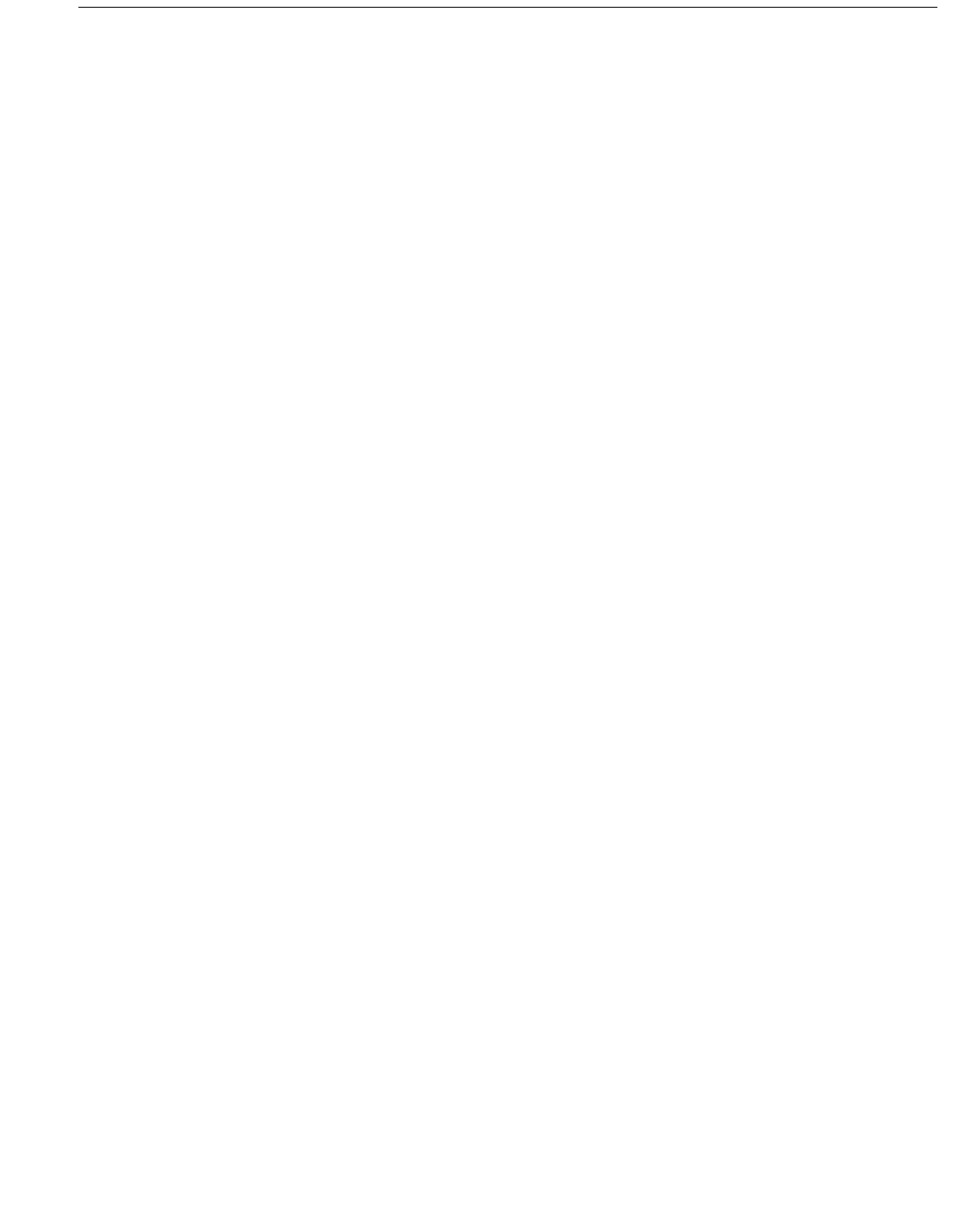
RECOMMENDED PRACTICE FOR PLANNING, DESIGNING AND CONSTRUCTING FIXED OFFSHORE PLATFORMS—WORKING STRESS DESIGN 101
12.6.1 Lifting Operations
For all lifting operations the structure strength and general
suitability of the equipment are to be considered. The forces
are to be derived as described in Section 2.4 and member
checks are to be made to determine that members and joints
are adequate for the lift conditions.
The lifting contractor should be familiar with the design
assumptions for the lift and perform the operations in compli-
ance with these assumptions. The operations should not be
performed under more severe environmental conditions than
those for which the objects involved are designed.
Prior to lifting, the lifted weight shall be predicted to
ensure that it is within the limits defined by the design and
within the capacity of all lifting equipment. Where weighing
is not carried out, it is recommended that an adequate margin
be applied to cover mill tolerance and growth in piping/
equipment weights, etc.
12.6.2 Lifting Points
Values of design forces for lifting points are recommended
in 2.4.2. Padeye plates should be oriented in such a direction
that the possibility for out-of-plane loading of the padeye
plate and shackle is minimized.
12.6.3 Alignment and Tolerances
The superstructure components will be aligned within the
tolerance specified in the design documents. After the piling
has been driven and cut off to grade, the superstructure
should be set with proper care being exercised to ensure
proper alignment and elevation. Unless otherwise specified,
the deck elevation shall not vary more than ±3 in. (76 mm)
from the design elevation shown in the drawing. The finished
elevation of the deck shall be within
1
/
2
in. (13 mm) of level.
12.6.4 Securing Superstructure
Once the superstructure components have been set (placed)
they should be secured to provide the support and fixity as
required by the design.
12.6.5 Appurtenances
Once the superstructure is installed, all stairways, hand-
rails, and other similar appurtenances should be installed as
specified.
12.7 GROUNDING OF INSTALLATION WELDING
EQUIPMENT
12.7.1 General
Normal welding procedures use reverse polarity wherein
the welding rod is positive (+) and the ground is negative (–).
The current flow is positive to negative, and an adequate and
properly placed ground wire is necessary to prevent stray cur-
rents, which, if uncontrolled, may cause severe corrosion
damage. (See NACE RP-01-76, Sec. 7, Par. 7.3.)
12.7.2 Recommended Procedure
The welding machine should be located on and grounded
to the structure whenever possible. When this is impossible or
impractical, and the welding machine is located on the barge
or vessel, both leads from the output of the welding machine
should be run to the structure and the ground lead secured to
the structure as close as practical to the area of welding.
Under no conditions should the hull of the barge (or vessel)
be used as a current path. The case or frame of the welding
machine should be grounded to the hull to eliminate shock
hazards to personnel.
The welding cables should be completely insulated to pre-
vent stray currents. Damaged cables should not be allowed to
hang in the water.
Grounding cable lugs should be tightly secured to ground-
ing plates. The lug contact should be thoroughly cleaned to
bare metal. The resistance of the connection should be a max-
imum of 125 microhms per connection or the voltage drop
across the connection should be a maximum of 62.5 milli-
volts for a current of 500 amperes. Use Ohm’s Law (V = IR)
for amperage other than 500 amperes.
The minimum cross-sectional area of the return ground
cable should be one million circular mils per 1,000 amperes
per 100 feet (645 circular mm per 1,000 amperes per 30.5
meters) of cable. One or more cables connected in parallel
may be used to meet minimum cross-section requirements.
Note: 2/0 cable contains 133,392 circular mils (86 circular mm).
3/0 cable contains 169,519 circular mils (109 circular mm).
4/0 cable contains 212,594 circular mils (137 circular mm).
More than one ground cable of sufficient size is suggested to
guard against a single return or ground becoming loose.
Connecting several welding machines to a common
ground cable which is connected to the structure being
welded will control stray currents if adequately sized and
properly insulated from the barge or vessel containing weld-
ing machines.
12.7.3 Monitoring Remote Ground Efficiency
When welding is conducted using generators remote from
a structure, grounding efficiency can be monitored by simul-
taneously measuring the potential of the structure and barge
or ship housing the welding generators. A change in potential
reading from either indicates insufficient grounding.
Copyright American Petroleum Institute
Provided by IHS under license with API
Licensee=Indonesia location/5940240008
Not for Resale, 10/22/2008 00:07:12 MDT
No reproduction or networking permitted without license from IHS
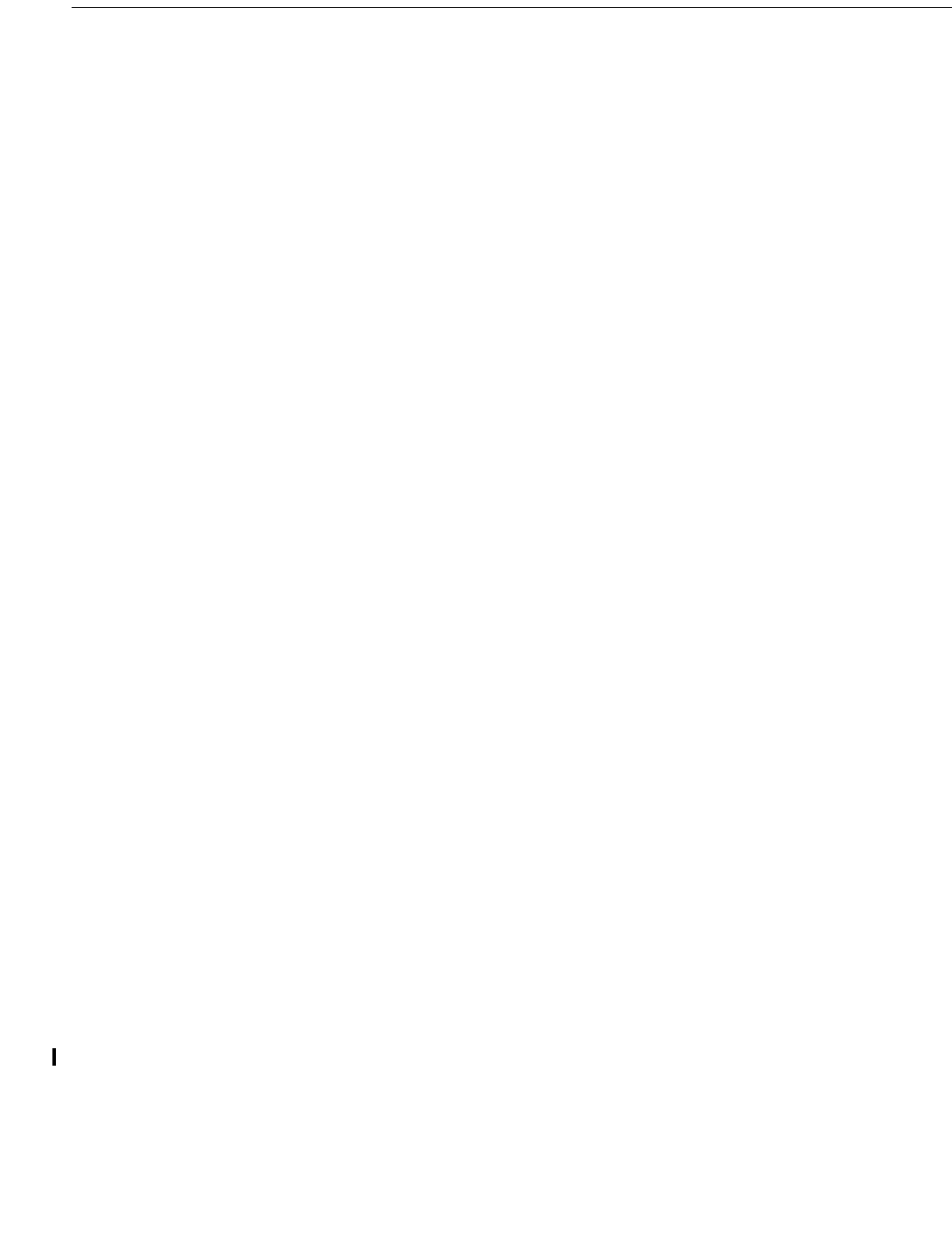
102 API RECOMMENDED PRACTICE 2A-WSD
13 Inspection
13.1 GENERAL
Quality control, inspection, and testing should be per-
formed to ensure adherence to the plans and specifications
which contain the detailed instructions necessary to obtain the
desired quality and service in the finished product. Quality
control, inspection, and testing should be performed during
all phases of construction, including the fabrication, loadout,
seafastening, towing, and installation phases to ensure that
specified requirements are being met. The most effective
quality control and inspection scheme is one which prevents
the introduction of defective materials or workmanship into a
structure, rather than finding these problems after they occur.
13.2 SCOPE
Quality control is normally performed by the construction
contractor prior to, during, and after fabrication, loadout,
seafastening, transportation, and installation, to ensure that
materials and workmanship meet the specified requirements.
Inspection and testing is normally conducted by the owner to
verify the required quality.
Responsibility for conducting the inspections and prepara-
tion of the recommended documentation should be as agreed
upon between the owner and the construction contractor.
Results of inspection should be prepared in a timely manner.
13.3 INSPECTION PERSONNEL
13.3.1 Inspectors
Inspectors should be qualified to carry out their duties by
education, experience and practical testing. They should be
knowledgeable in the general areas of welding technology,
inspection, and testing procedures, as well as construction
methods for those areas of their responsibility during fabrica-
tion, loadout, seafastening, transportation, and installation.
They should know how and where to look for problems and
situations which lead to problems, as well as the practical
limitations on making repairs.
13.3.2 Inspector Qualifications
Personnel who perform nondestructive weld examinations
should be required to qualify by passing a practical test based
on the inspection methods and type of construction under
consideration for a particular job. All inspectors should have
demonstrated ability and experience, or be qualified to the
appropriate codes, such as AWS (D1.1-2002), ASME/ANSI,
or equivalent. Specialty technicians, such as ultrasonic (UT)
or radiography (RT) should also be qualified to other guide-
lines such as API RP 2X (UT) or SNT-TC-1A (radiography,
magnetic particle, liquid penetrant, etc.). Continued qualifica-
tion should be based on satisfactory performance on the job.
Personnel who perform other inspection during any
phase of construction of on offshore platform should be
required to demonstrate ability and experience or be quali-
fied to an appropriate code for the required inspection of a
particular job.
13.3.3 Access to Work
Authorized personnel should have access at all times to all
phases of the work under their responsibility to ensure that
the required quality is obtained.
13.4 FABRICATION INSPECTION
13.4.1 Materials
Inspection should verify that all materials being incorpo-
rated into any portion of the fabrication are of good quality
and in accordance with the specified requirements. Receipt of
the correct material should be verified by cross-checking with
appropriate original mill certificates and heat stamps, and
with other appropriate documentation for non-structural
material and structural materials other than steel.
13.4.2 Fabrication
Inspections of the structure should be made during all
phases of fabrication (i.e., pre-fabrication, rolling, forming,
welding, interim storage, assembly, erection, etc.) to confirm
compliance with the specified requirements (i.e., joint details,
weld profiles, dimensions, alignment, tolerances, orientation,
etc.). In general, inspection should confirm that each compo-
nent incorporated into the structure is of correct material; size
and dimension; orientation, etc.; and is fitted, aligned, and
permanently fastened according to the specified require-
ments. Jacket legs and pile sleeves through which piles will
be field installed, should be carefully checked for internal
clearance and, if possible, drifted with a template of nominal
length or other appropriate method to ensure required toler-
ances have been met. Particular attention should be given to
field mating points (such as the tops of jacket legs) which
should be checked to ensure all dimensions are within toler-
ance. Inspection also should be made for all items affecting
the assembly, including erection site structures (i.e., tempo-
rary foundations, bulkhead), erection aids, and erection
equipment. Inspections should confirm that these items are in
accordance with the specified requirements.
13.4.3 Welding
Welding inspection and testing should be performed to ver-
ify adherence to the specified requirements. Inspection and
testing should be performed during all phases of fabrication
with an aim to preventing introduction of defects into the
weld.
05
Copyright American Petroleum Institute
Provided by IHS under license with API
Licensee=Indonesia location/5940240008
Not for Resale, 10/22/2008 00:07:12 MDT
--`,,```,,,`,,,,,,,,,,,,,,`,``,`-`-`,,`,,`,`,,`---
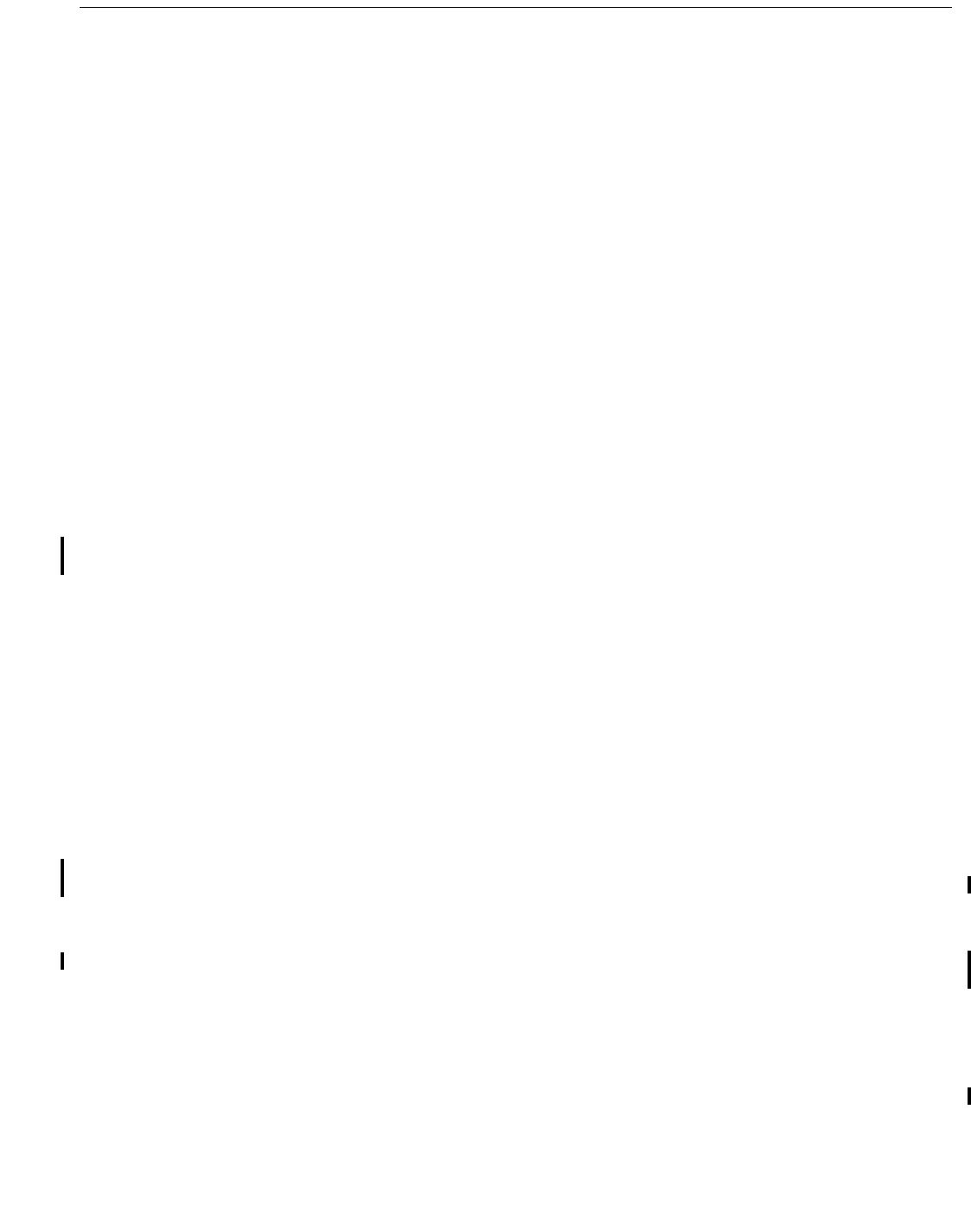
RECOMMENDED PRACTICE FOR PLANNING, DESIGNING AND CONSTRUCTING FIXED OFFSHORE PLATFORMS—WORKING STRESS DESIGN 103
Inspection should verify that the welder (or welding opera-
tor) is currently qualified for the procedure being used (as per
Section 10) and that the appropriate qualified procedure is
being followed. In addition, inspection should ensure that
appropriate consumables are being used and that the consum-
ables are being stored, handled, and used in accordance with
appropriate requirements, including the manufacturer’s rec-
ommendations.
13.4.3.a Inspection Methods
Three nondestructive inspection methods are routinely
used on fabricated structures. These methods include visual,
ultrasonics (UT), and radiography (RT). The magnetic parti-
cle inspection technique (MT) and the liquid penetrant tech-
nique (PT) are generally considered as enhanced visual
inspection techniques. However, these two techniques have
procedural requirements which should be followed if used.
An approved procedure for each inspection method should
be developed for each job application, based on the refer-
enced specification noted below.
Visual. The visual technique is used either by itself or as an
integral part of other Non Destructive Examination (NDE)
techniques. Visual inspection requirements should be con-
ducted in accordance with AWS D1.1-2002 (Sections 6.5 and
6.9, plus Sections 5, 3, and Section 2 Parts A and D).
Penetrant Technique. The liquid penetrant inspection tech-
nique (PT) is useful for detecting surface discontinuities such
as cracks, porosity, etc. The method for using PT for disconti-
nuities that are open to the surface should conform to ASTM
E165 (1983).
Magnetic Particle Technique. The magnetic particle Tech-
nique (MT) is useful for detecting discontinuities that are
open to the surface or which are slightly subsurface. The pro-
cedure for magnetic particle inspection should conform to the
requirements of ASTM E709.
Radiographic Technique. The radiographic technique (RT)
is useful for determining buried or through thickness disconti-
nuities. The RT procedures should conform to AWS D1.1-
2002, Sections 6.12, 6.16 and 6.18.
Ultrasonic Technique. The ultrasonic technique (UT) is also
used for determining buried or through thickness discontinui-
ties. API RP 2X (1996) should be used for guidance on per-
sonnel qualifications, UT techniques, procedures, and
inspection reports.
Method Selection. A number of parameters should be con-
sidered for selection of an inspection method, including: joint
geometry, applied stress (type and magnitude), thickness(es)
of the structural joint(s), and discontinuity (type-size-and
location). Coordination among the designer, fabricator,
inspector, and owner is essential and consultation with an
NDE specialist is recommended in order to select the most
appropriate technique for a particular application.
13.4.3.b Extent of Weld Inspection
Scheduling. To the maximum extent possible, inspection and
testing should be performed as construction progresses and
be scheduled so as not to delay the progress of the job.
Inspection Criteria. The plans, procedures, and specifica-
tions, should clearly delineate which materials and fabricated
items are to be inspected by nondestructive testing. The
acceptance criteria, extent of testing, and the methods to be
used in such inspection should be clearly defined.
Fit-Ups. All weld fit-ups (joint preparation prior to welding)
should be visually inspected to ensure acceptable tolerances
before welding.
Visual Inspection. Welding in progress should be visually
inspected to assure proper cleaning, tie-in, etc. As a minimum
the passes which should be inspected are: root, hot (or sec-
ond) and the completed weld-cap.
Extent of NDE Inspection. Table 13.4.3 shows recom-
mended minimum extent of inspection for various parts of the
structure.
13.4.3.c Quality of Welds
Weld area surfaces should be adequately prepared so that
NDE can be carried out. This should include removal of weld
spatter and appropriate marking for inspection. Adequate
time should be allowed for weld cool-down before conduct-
ing NDE.
UT Quality. Three levels of weld quality are widely
accepted: 1) Level A—Workmanship Quality, 2) Level C—
Experienced based fitness-for-purpose quality; and 3) Level
F—specific fitness-for-purpose quality. Detailed interpreta-
tion of these levels and UT reject criteria for each level
should be in accordance with API RP 2X (1996).
Weld Quality for NDE. For welds subjected to non-destruc-
tive testing by radiography or any method other than UT the
weld quality requirements of AWS D1.1-2002 Section 6.12.1
(nontubular static), AWS D1.1-2000 Section 6.12.3 (tubular),
as applicable, should apply, except as modified herein.
Weld Profiles. Weld profiles in simple tubular joints should
be free of excessive convexity, and should merge smoothly
with the base metal both brace and chord in accordance with
AWS D1.1-2002 Section 3.13.4.
05
05
05
05
05
05
Copyright American Petroleum Institute
Provided by IHS under license with API
Licensee=Indonesia location/5940240008
Not for Resale, 10/22/2008 00:07:12 MDT
--`,,```,,,`,,,,,,,,,,,,,,`,``,`-`-`,,`,,`,`,,`---
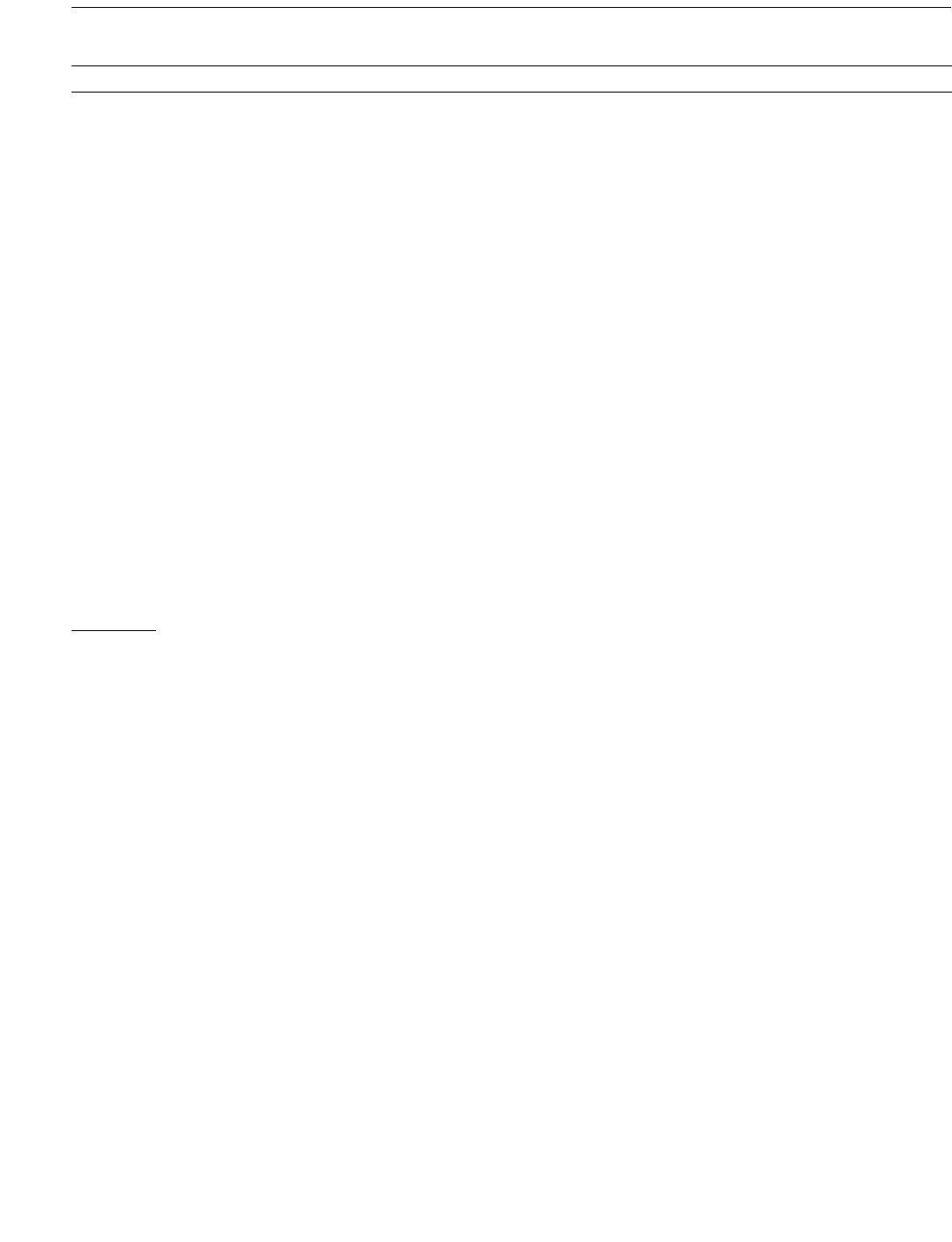
104 API RECOMMENDED PRACTICE 2A-WSD
Relaxation of Rejection Criteria. For simple tubular joints,
defects in the root area of the weld are less detrimental than
elsewhere, as well as being more difficult to repair. Subject to
specific guidelines provided by the designer, some relaxation
of the above-mentioned reject criteria may be appropriate.
Defects in back-up welds, or root lands, which are not part of
theoretical strength weld (minimum “T” in Figure 11.1.3)
should not be cause for rejection.
13.4.4 Corrosion Protection Systems
Details regarding the inspection of corrosion protection
systems should be in accordance with NACE Standard RP-
01-76 (1983 Revision).
13.4.4.a Coatings
Inspections should verify that surface preparation, climatic
conditions (i.e., wind, temperature, humidity), coating pro-
cess, and materials are in compliance with specified require-
ments prior to application of coating. Where applicable,
manufacturer’s instructions should be closely followed. Dur-
ing the coating process, inspection should be performed to
verify the surface preparation, the thickness of each layer, and
adherence of the coating to the base metal.
Repaired coating should be subjected to the same inspec-
tion requirements as the original coating.
13.4.4.b Splash Zone Protection
Inspection should verify that splash zone protection
(i.e., monel wrap, fiberglass coatings, rubber sheathing,
fusion bonded epoxy, etc.) is installed according to the
Table 13.4.3—Recommended Minimum Extent of NDE Inspection
Case Extent, Percent Method
Structural Tubulars
Longitudinal Weld Seam (L) 10* UT or RT
Circumferential Weld Seam (C) 100 UT or RT
Intersection of L & C 100 UT or RT
Tubular Joints
Major brace-to-chord welds 100 UT
Major brace-to-brace welds 100 UT
Misc. Bracing
Conductor Guides 10* UT (or MT)**
Secondary bracing and subassemblies, i.e., splash zone,
and/or mudline secondary bracing, boat landings, etc.
10* UT (or MT)**
Attachment weld connecting secondary bracing/subassemblies
to main members
100 UT or MT
Deck Members
All primary full penetration welds 100 UT or RT
All partial penetration welds 100 Visual***
All fillet welds 100 Visual***
*Partial inspection should be conducted as 10 percent of each piece, not 100 percent of 10 percent of the number of pieces. Partial inspection
should include a minimum of three segments randomly selected unless specific problems are known or suspected to exist. All suspect areas
(e.g., areas of tack welds) shall be included in the areas to be inspected. If rejectable flaws are found from such 10% inspection, additional
inspection should be performed until the extent of rejects has been determined and the cause corrected.
**Depending upon design requirements and if specified in the plans and specifications MT may be an acceptable inspection method.
***May include MT and/or PT.
Copyright American Petroleum Institute
Provided by IHS under license with API
Licensee=Indonesia location/5940240008
Not for Resale, 10/22/2008 00:07:12 MDT
--`,,```,,,`,,,,,,,,,,,,,,`,``,`-`-`,,`,,`,`,,`---

RECOMMENDED PRACTICE FOR PLANNING, DESIGNING AND CONSTRUCTING FIXED OFFSHORE PLATFORMS—WORKING STRESS DESIGN 105
specified requirements, including the manufacturer’s rec-
ommendations.
13.4.4.c Cathodic Protection Systems
Inspection of the cathodic protection equipment, whether
sacrificial anode or impressed current type, should be per-
formed to confirm that it meets the specified requirements.
If included in the system, cabling, junction boxes, etc.,
should be inspected to ensure all components are properly
attached and that electrical continuity is confirmed. Attach-
ment of anodes (e.g., welding of anode stand-off posts, dou-
bler plates, impressed current anode sockets; installation of
impressed current anodes into sockets) should be inspected to
ensure compliance with the specified requirements.
13.4.5 Installation Aids and Appurtenances
Inspections should verify that all installation aids and
appurtenances are installed and tested in accordance with the
specified requirements, including manufacturer’s recommen-
dations. Installation Aids include the following:
• Launch Systems
• Flooding Systems
• Grouting Systems
•Mud Mats
•Jetting Systems
• Lugs and Guides
• Monitoring Systems
• Pre-installed Piles and Conductors
Appurtenances include the following:
• Boat Landings
• Riser Guards
• Risers and Clamps
•J-Tubes
• Sump and Pump Caissons
The location, size and orientation should be checked, and
weld attachments (including temporary restraints) should be
subjected to 100% NDE.
Inspections should include functional tests of all mechani-
cal and electrical equipment and systems, including instru-
mentation. Cabling and instrumentation should be checked to
ensure continuity and all hydraulic and pneumatic lines
should be pressure tested.
All non-steel components (i.e., diaphragms, packers, valve
seats, etc.) should be protected from damage by weld spatter,
debris and/or any other construction activities, and hydraulic
lines should be thoroughly flushed and drained before and
after testing. The inside of jacket legs, skirt piles, etc., should
be inspected to ensure complete removal of debris (e.g.,
welding rods, misc. pieces of wood, steel, etc.) which could
damage non-steel components during installation.
13.5 LOAD OUT, SEAFASTENING, AND
TRANSPORTATION INSPECTION
Inspection should be performed for all areas related to load
out, seafastening and transportation to confirm compliance
with the specified requirements. Prior to load out, final
inspection of the structure should be conducted to ensure all
components are in place; all welds have been properly com-
pleted and inspected; all temporary transportation/installation
aids are included and secure; all hydraulic and pneumatic
lines have been properly installed, tested, flushed, and
secured; that all temporary fabrication aids and debris have
been removed; and that all temporary welded attachments
have been removed and attachment marks repaired according
to the specified requirements.
The support foundations, including the loadout pathway,
the dock, the transport vessel, and the sea bottom at dock side
should be inspected to ensure compliance with the specified
requirements.
Other areas for inspection include the lifting/pulling/push-
ing components attached to the structure (which require
NDE) and those between the structure and lifting equipment
(i.e., lifting slings, shackles, spreader beams). For vendor
supplied items, documentation is required in addition to the
inspections. The capacity and condition of loadout equipment
should be confirmed by inspection and documentation.
For skidded loadouts inspection should be performed to
confirm that the skidway and/or launch surface is clean and
properly lubricated (if required) prior to loadout. The
winches, jacks and pulling cables should be inspected for
proper capacity and condition.
Where ballast and de-ballast operations are required to
compensate for tidal variations, inspection of the ballast sys-
tem is required to confirm adequacy and equipment condi-
tion. Monitoring of the operation is also recommended, to
ensure compliance with the load out procedure.
Inspection for seafastening of the structure and all deck
cargo is required to confirm compliance with the specified
requirements. This includes temporary tie-downs and bracing
required for transport. Materials, fabrication and weld inspec-
tion requirements shall be as per Section 13.4. Inspection for
jacket launch items should be conducted where possible prior
to sea transport.
Sea worthiness of tugs, towing attachments and the trans-
port vessel should also be confirmed. For preparation of self
floaters for transport to the site, inspection should be per-
formed to confirm sea worthiness and that all towing/restrain-
ing lines are properly attached.
13.6 INSTALLATION INSPECTION
13.6.1 Jacket Launch and Upending
Prior to launch, inspection should confirm that all tie-
downs and temporary bracing are cut loose, and tow lines and
Copyright American Petroleum Institute
Provided by IHS under license with API
Licensee=Indonesia location/5940240008
Not for Resale, 10/22/2008 00:07:12 MDT
--`,,```,,,`,,,,,,,,,,,,,,`,``,`-`-`,,`,,`,`,,`---
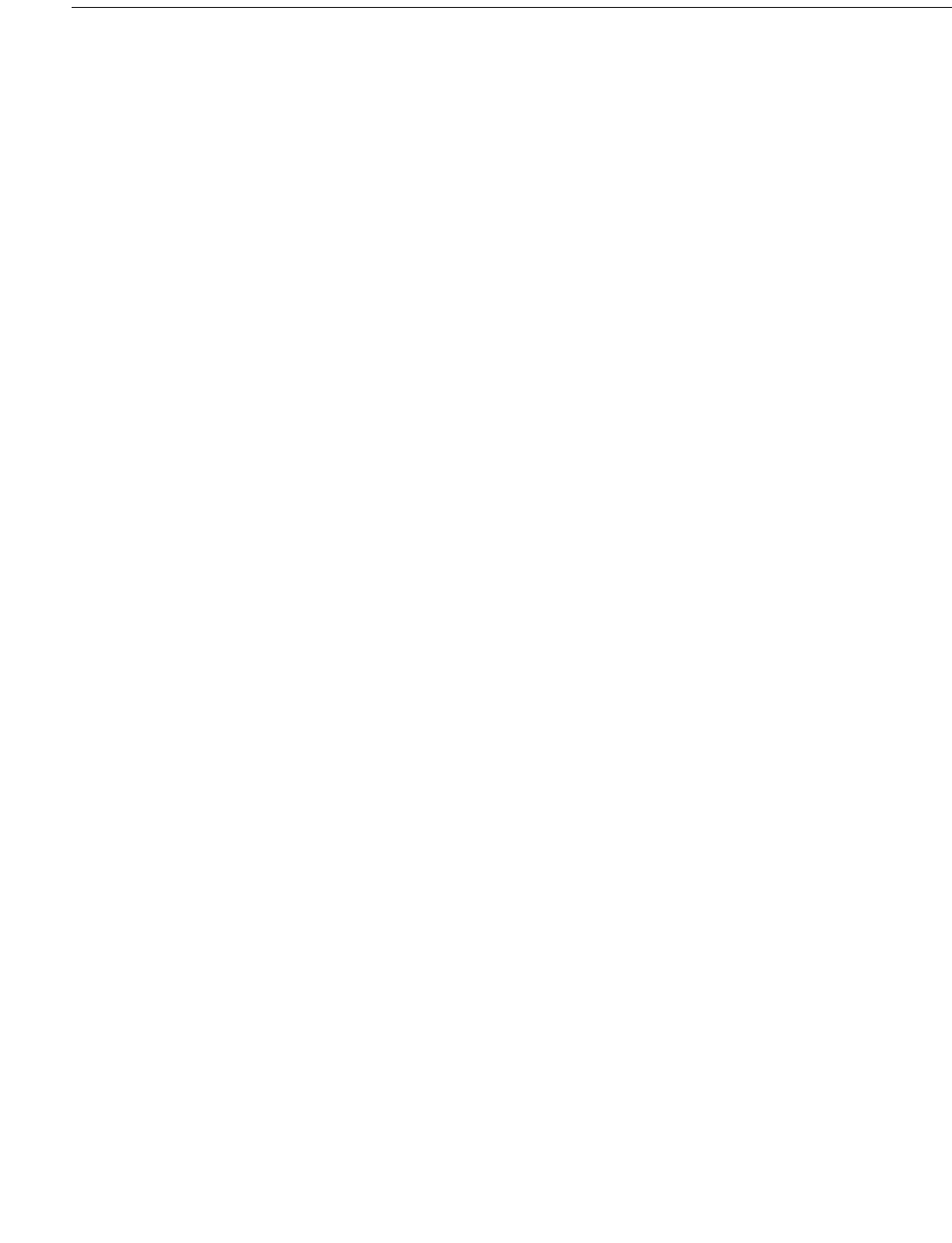
106 API RECOMMENDED PRACTICE 2A-WSD
loose items are removed from the launch barge or safely
secured. Inspection is required to confirm that the jacket
flooding system is undamaged, flooding valves are closed,
and the launching arm system is in the proper mode of opera-
tion. For lifted jackets, inspection should confirm removal of
all restraints, and proper attachment of lifting equipment, as
well as the undamaged and properly configured operation
mode of the flooding system. For self-floating jackets,
inspection should confirm removal of tow lines as well as the
undamaged and properly configured operation mode of the
flooding system.
Inspection should be carried out after the jacket is secured
in place. If inspection is necessary before then (i.e., suspected
damage to flooding system), inspection should be limited to
those items required to upend and secure the jacket.
13.6.2 Piling and Conductor Installation
All pile and conductor welds performed during fabrication
should be inspected (as per Section 13.4) prior to load out,
including lifting devices, lugs, and attachments. During
installation, inspection should be conducted to ensure that the
correct pile make-up is followed, and that the welding of add-
on sections (if applicable) is performed in accordance with
the specified requirements.
Prior to each use, pile hammers should be inspected for
proper hook-up and alignment for operation.
If vibration levels in the structure (above water) appear to
be excessive during pile driving, the driving operation should
be interrupted to inspect for possible fatigue damage in the
structure.
During pile installation, non-destructive testing should be
performed on the welded connections at pile add-ons;
between pile and deck support members; between the pile
and jacket leg; and elsewhere, to confirm compliance with the
specified requirements. NDE inspection should be performed
as per Section 13.4 with 100% UT of all critical welds is par-
ticularly difficult to evaluate with UT. Alternatively, careful
visual inspection of each pass should be made, followed by
MT inspection of the final weld.
13.6.3 Superstructure Installation
Prior to lifting, inspection should be performed to confirm
that tie-downs and other items not considered in the lifting
design are removed from the superstructure. Proper rigging
and connection of all lifting components should also be con-
firmed.
Immediately after lifting, inspection should be performed
on all scaffolding and other temporary support systems to
confirm their adequacy for completion of weld out. Materials,
fabrication and welding requirements shall be in accordance
with Section 13.4. Inspection should be performed on the
jacket and deck mating points to confirm proper alignment
and fit-up and to ensure that weld preparations are as per
specified requirements. Following weld out, inspection
should be performed on the welded connections as per Sec-
tion 13.6.2 and/or other specified requirements.
These inspections should be performed for each compo-
nent of a multiple-lift superstructure, with inspection for
alignment during each lift.
13.6.4 Underwater Inspection
In the event the installation requires underwater operations,
the inspection should verify either by direct communications
with divers or through the use of a remote monitoring device
that the operation has been conducted in accordance with the
specified requirements.
13.7 INSPECTION DOCUMENTATION
13.7.1 General
During the fabrication, erection, load out and installation
phases, data related to the inspection of the platform will be
generated which may not be part of the Welding (Section
10.4); Fabrication (Section 11.5); or Installation (Section
12.1.2) records. Such inspection data should be recorded as
the job progresses and compiled in a form suitable to be
retained as a permanent record.
All documentation referenced in this Section 13, should be
retained on file for the lift of the structure.
13.7.2 Fabrication Inspection Documentation
13.7.2.a Materials and Fabrication Inspection
During the fabrication phase material inspection documen-
tation covering the Mill Certificates and Material Identifica-
tion Records (as described in Section 11.3) as well as any
additional materials, testing or special inspections which
were conducted, should be prepared and assembled. This
should include documentation for any inspection related to
the assembly of the structure.
13.7.2.b Weld Inspection
A set of structural drawings should be marked with an
appropriate identification system detailing the location of
each weld to be examined and referenced as an integral part
of the inspection record. All welds should be uniquely identi-
fied and be traceable to the individual welder or weld opera-
tor. A report should be prepared for each examination
performed, the details of which should be documented suffi-
ciently to permit repetition of the examination at a later date.
Sketches and drawings incorporating the weld identification
system should be used to augment descriptions of the part and
locations of all discontinuities required to be reported. Forms
should be provided to show the required details of documen-
tation, and sketches of typical weld configurations should
also be provided to clarify the written description. Disconti-
Copyright American Petroleum Institute
Provided by IHS under license with API
Licensee=Indonesia location/5940240008
Not for Resale, 10/22/2008 00:07:12 MDT
--`,,```,,,`,,,,,,,,,,,,,,`,``,`-`-`,,`,,`,`,,`---

RECOMMENDED PRACTICE FOR PLANNING, DESIGNING AND CONSTRUCTING FIXED OFFSHORE PLATFORMS—WORKING STRESS DESIGN 107
nuities required to be reported should be identified on
sketches by the appropriate weld number and position.
13.7.2.c Other Inspection
Inspection of all non-structural systems and test should be
documented to confirm details of the inspection and results.
Any deviations from the specified requirements should be
properly recorded, including sketches if necessary.
13.7.3 Load Out, Seafastening and Transportation
Inspection Documentation
Inspection documentation for any special materials, testing
and for all welding inspection performed in connection with
the load out, seafastening and transportation phases should be
recorded and retained as part of the inspection record. Any
special documentation for inspection of vendor-supplied
items (i.e., lifting slings) and reports for other areas affecting
loadout (i.e., transport vessel, dock) which is not included in
the installation plan or records described in Section 12 should
also be recorded.
13.7.4 Installation Inspection Documentation
Inspection documentation for materials, testing and weld-
ing inspection performed during the installation phase should
be recorded and retained. Pile blow count versus depth and
final pile penetration should be documented, and a continu-
ous log of events, including climatic conditions (i.e., tempera-
ture, wind, barometric pressure, humidity), sea states,
operational activities, etc., should be retained.
14 Surveys
14.1 GENERAL
During the life of the platform, in-place surveys that moni-
tor the adequacy of the corrosion protection system and deter-
mine the condition of the platform should be performed in
order to safeguard human life and property, protect the envi-
ronment, and prevent the loss of natural resources.
The inspection program (that is, survey levels, frequency,
special surveys and pre-selected survey areas) should be
compiled and approved by a qualified engineer familiar with
the structural integrity aspects of the platform.
14.2 PERSONNEL
14.2.1 Planning
Surveys should be planned by qualified personnel possess-
ing survey experience and technical expertise commensurate
with the level of survey to be performed.
14.2.2 Survey
Surveys should be performed by qualified personnel and
should include the observations of platform operating and
maintenance personnel familiar with its condition. The per-
sonnel conducting surveys of above-water areas should know
how and where to look for damage and situations that could
lead to damage.
Cathodic potential surveys and/or visual inspection of the
underwater portion of a platform should be conducted by
ROV or divers under the supervision of personnel experi-
enced in the methods employed. Nondestructive examination
of the platforms should be performed by personnel trained
and experienced in application of the method being used.
Cathodic potential surveys should be supervised by personnel
knowledgeable in this area.
14.3 SURVEY LEVELS
14.3.1 Level I
A Level I survey consists of a below-water verification of
performance of the cathodic protection system (for example,
dropped cell), and of an above-water visual survey to deter-
mine the effectiveness of the corrosion protection system
employed, and to detect deteriorating coating systems, exces-
sive corrosion, and bent, missing, or damaged members.
This survey should identify indications of obvious over-
loading, design deficiencies, and any use that is inconsistent
with the platform’s original purpose. This survey should also
include a general examination of all structural members in the
splash zone and above water, concentrating on the condition
of the more critical areas such as deck legs, girders, trusses,
etc. If above-water damage is detected, nondestructive testing
should be used when visual inspection cannot fully determine
the extent of damage. Should the Level I survey indicate that
underwater damage could have occurred, a Level II inspec-
tion should be conducted as soon as conditions permit.
14.3.2 Level II
A Level II survey consists of general underwater visual
inspection by divers or ROV to detect the presence of any or
all of the following:
1. Excessive corrosion.
2. Accidental or environmental overloading.
3. Scour, seafloor instability, etc.
4. Fatigue damage detectable in a visual swim-around
survey.
5. Design or construction deficiencies.
6. Presence of debris.
7. Excessive marine growth.
Copyright American Petroleum Institute
Provided by IHS under license with API
Licensee=Indonesia location/5940240008
Not for Resale, 10/22/2008 00:07:12 MDT
--`,,```,,,`,,,,,,,,,,,,,,`,``,`-`-`,,`,,`,`,,`---
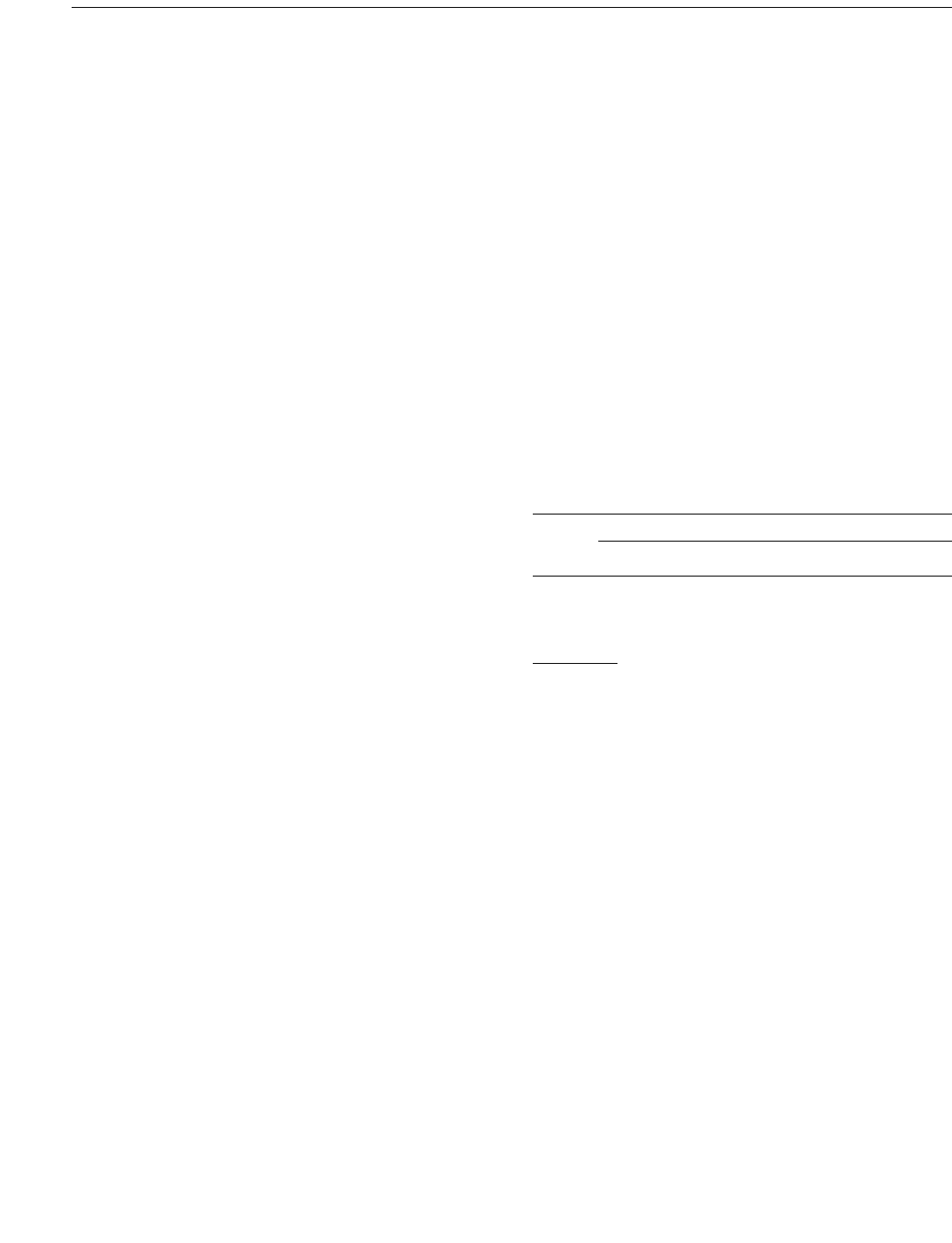
108 API RECOMMENDED PRACTICE 2A-WSD
The survey should include the measurement of cathodic
potentials of pre-selected critical areas using divers or ROV.
Detection of significant structural damage during a Level II
survey should become the basis for initiation of a Level III
survey. The Level III survey, if required, should be conducted
as soon as conditions permit.
14.3.3 Level III
A Level III survey consists of an underwater visual inspec-
tion of preselected areas and/or, based on results of the Level
II survey, areas of known or suspected damage. Such areas
should be sufficiently cleaned of marine growth to permit
thorough inspection. Preselection of areas to be surveyed (see
Section 14.5) should be based on an engineering evaluation
of areas particularly susceptible to structural damage, or to
areas where repeated inspections are desirable in order to
monitor their integrity over time.
Flooded member detection (FMD) can provide an accept-
able alternative to close visual inspection (Level III) of pre-
selected areas. Engineering judgment should be used to deter-
mine optimum use of FMD and/or close visual inspection of
joints. Close visual inspection of pre-selected areas for corro-
sion monitoring should be included as part of the Level III
survey.
Detection of significant structural damage during a Level
III survey should become the basis for initiation of a Level IV
survey in those instances where visual inspection alone can-
not determine the extent of damage. The Level IV survey, if
required, should be conducted as soon as conditions permit.
14.3.4 Level IV
A Level IV survey consists of underwater nondestructive
testing of preselected areas and/or, based on results of the
Level III survey, areas of known or suspected damage. A
Level IV survey should also include detailed inspection and
measurement of damaged areas.
A Level III and/or Level IV survey of fatigue-sensitive
joints and/or areas susceptible to cracking could be necessary
to determine if damage has occurred. Monitoring fatigue-sen-
sitive joints, and/or reported crack-like indications, can be an
acceptable alternative to analytical verification.
In the U.S. Gulf of Mexico, cracking due to fatigue is not
generally experienced; if cracks occur, they are most likely
found at joints in the first horizontal conductor framing below
water, normally resulting from fatigue degradation; or cracks
may also occur at the main brace to leg joints in the vertical
framing at the first bay above mudline, normally due to envi-
ronmental overload (for example, low cycle fatigue), or at the
perimeter members in the vertical framing at the first bay
below water level, normally as a result of boat impact.
If crack indications are reported, they should be assessed
by a qualified engineer familiar with the structural integrity
aspects of the platform(s).
14.4 SURVEY FREQUENCY
14.4.1 Definitions
The frequency of surveys are dependent upon the exposure
categories of the platform for both life safety and conse-
quence of failure considerations, as defined in Section 1.7.
14.4.2 Guideline Survey Intervals
The time interval between surveys for fixed platforms
should not exceed the guideline intervals shown in Table
14.4.2-1 unless experience and/or engineering analyses indi-
cate that different intervals are justified. Justification for
changing guideline survey intervals should be documented
and retained by the operator. In such cases, the following fac-
tors, which either increase or decrease the survey intervals,
should be taken into account:
1. Original design/assessment criteria.
2. Present structural condition.
3. Service history of platform (for example, condition of
corrosion protection system, results of previous inspec-
tions, changes in design operating or loading
conditions, prior damage and repairs, etc.).
4. Platform structural redundancy.
5. Criticalness of the platform to other operations.
6. Platform location (for example, frontier area, water
depth, etc.).
7. Damage.
8. Fatigue sensitivity.
Survey intervals should be established by utilizing the
ranges from T
able 14.4.2-1, considerations of past inspection
records and reference to Section 14.4.1. Alternatively, mini-
mum survey intervals for each level should be used.
Table 14.4.2-1—Guideline Survey Intervals
Exposure
Category
Level
Survey level
III IIIIV
L-1 1 yr 3 through 5 yrs 6 through 10 yrs *
L-2 1 yr 5 through 10 yrs 11 through 15 yrs *
L-3 1 yr 5 through 10 yrs * *
Note: yrs = years.
*Surveys should be performed as indicated in Sections 14.3.3 and
14.3.4.
Copyright American Petroleum Institute
Provided by IHS under license with API
Licensee=Indonesia location/5940240008
Not for Resale, 10/22/2008 00:07:12 MDT
--`,,```,,,`,,,,,,,,,,,,,,`,``,`-`-`,,`,,`,`,,`---
